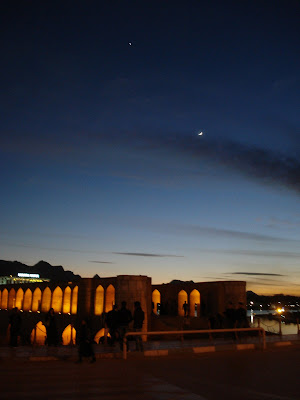Bricks and Stucco Rather than Tiles
The most significant building in Na’in is certainly its more than 1000-years old Friday mosque, build in 960 CE. Its single minaret without any ornaments has an octagonal ground plan and tapers. It is built on a small hill somewhat outside of the old city’s center. Nearby, a guard will open the doors of a small museum which is part of a Safavid traditional house with a small sunken garden.
The mosque itself, one of the oldest in Iran where still Friday prayers take place, is Abbasid/Buyid, as the remains of the Jurjir mosque in Esfahan. Brickwork and carved stucco especially of the mihrab and surrounding bays are superb and well-preserved. There is no iwan, which is in fact a development of the later Seljuq rulers of Iran.
The bazaar in the old city is a museum, too. The shops had been closed long time ago when the owners moved to the modern part of the city.

The mosque itself, one of the oldest in Iran where still Friday prayers take place, is Abbasid/Buyid, as the remains of the Jurjir mosque in Esfahan. Brickwork and carved stucco especially of the mihrab and surrounding bays are superb and well-preserved. There is no iwan, which is in fact a development of the later Seljuq rulers of Iran.
The bazaar in the old city is a museum, too. The shops had been closed long time ago when the owners moved to the modern part of the city.




















Comments